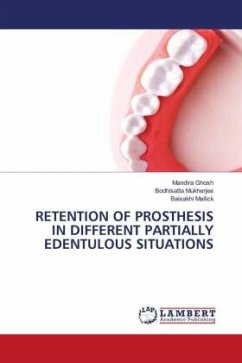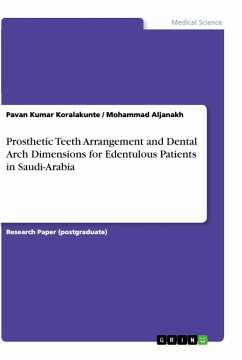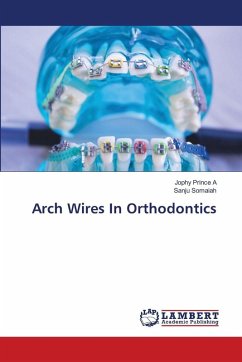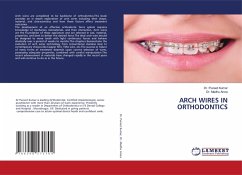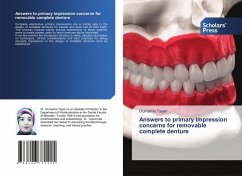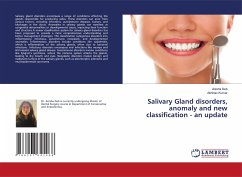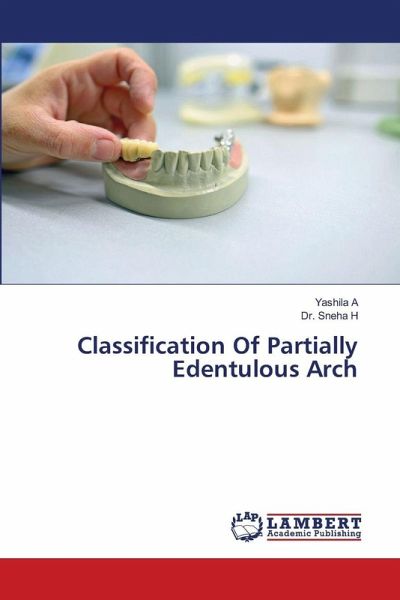
Classification Of Partially Edentulous Arch
Versandkostenfrei!
Versandfertig in 6-10 Tagen
29,99 €
inkl. MwSt.

PAYBACK Punkte
15 °P sammeln!
It is an overview of classification, diagnosis, and treatment of partially edentulous arches in prosthodontics. It highlights the purpose of classification systems-to aid treatment planning, communication, and denture design-and reviews many systems, from early ones like Cummer's and Kennedy's (the most widely used, refined by Applegate's rules), to others such as Bailyn, Neurohr, Mauk, Wild, Godfrey, Beckett & Wilson, and the modern ACP classification. Treatment options range from removable partial dentures (RPDs) and fixed bridges to overdentures and implants, depending on the patient's cond...
It is an overview of classification, diagnosis, and treatment of partially edentulous arches in prosthodontics. It highlights the purpose of classification systems-to aid treatment planning, communication, and denture design-and reviews many systems, from early ones like Cummer's and Kennedy's (the most widely used, refined by Applegate's rules), to others such as Bailyn, Neurohr, Mauk, Wild, Godfrey, Beckett & Wilson, and the modern ACP classification. Treatment options range from removable partial dentures (RPDs) and fixed bridges to overdentures and implants, depending on the patient's condition, support available, and complexity of tooth loss. Indications for RPD include long-span edentulous areas, lack of distal abutments, reduced periodontal support, or esthetic demands, while poor hygiene, psychological issues, or anatomical limitations may contraindicate them. Prosthodontic management follows six phases: diagnosis, pre-prosthetic preparation, design, impression making, fabrication, and post-insertion care. Ultimately, successful rehabilitation depends on careful diagnosis, patient motivation, and long-term maintenance, aesthetics and oral health stability.




